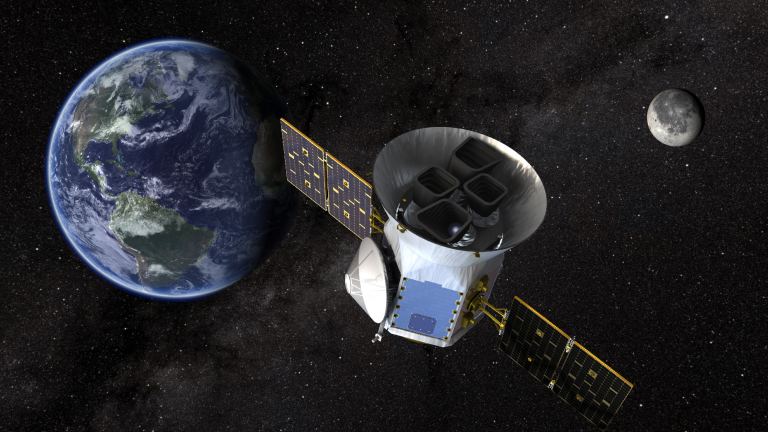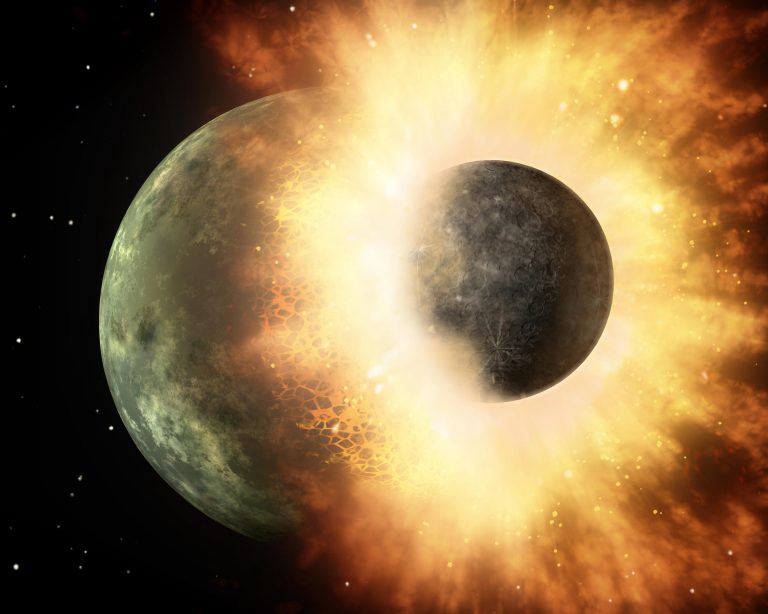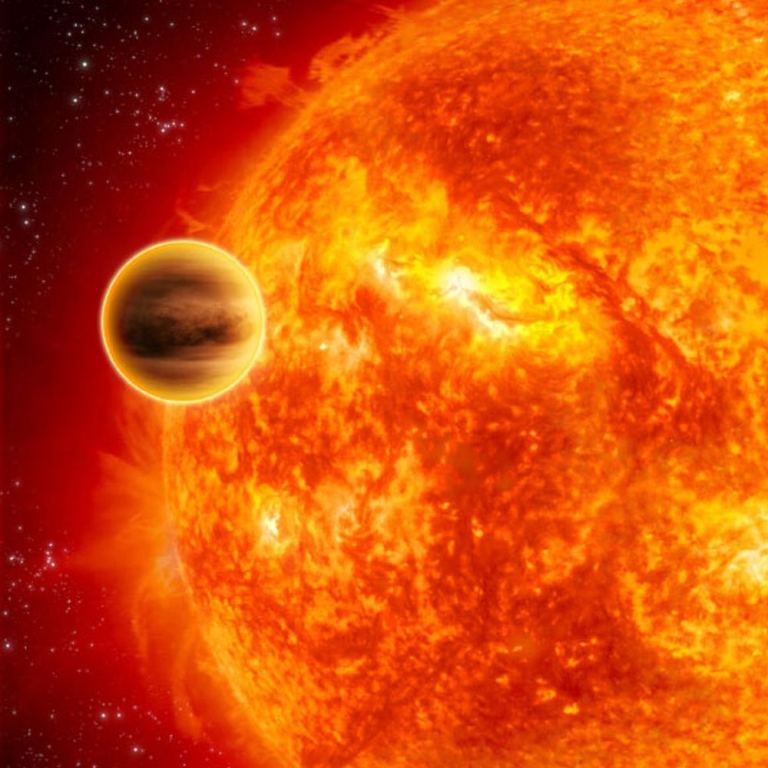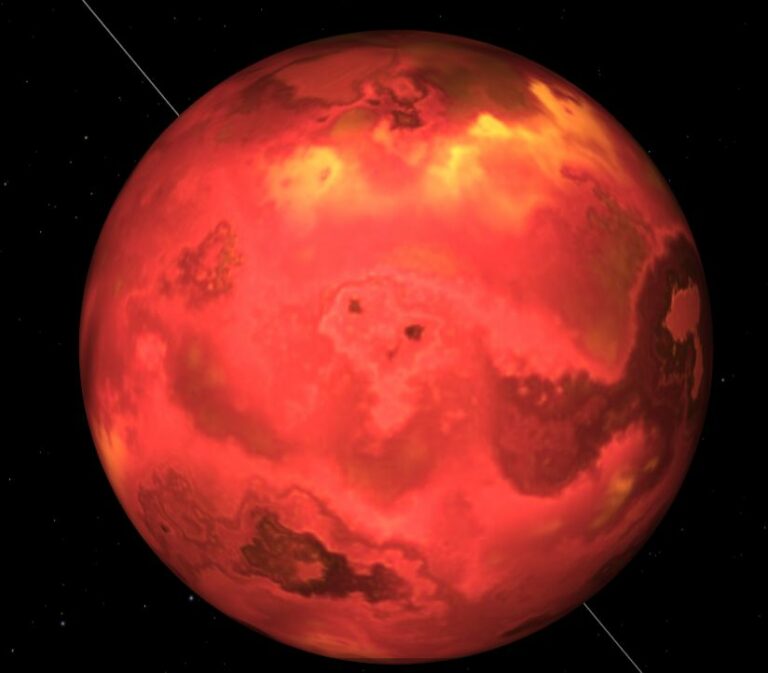This Exoplanet is Probably a Solid Ball of Metal
We can’t understand nature without understanding its range. That’s apparent in exoplanet science and in our theories of planetary formation. Nature’s outliers and oddballs put pressure on our models and motivate scientists to dig deeper.
Gliese 367 b (or Tahay) is certainly an oddball. It’s an Ultrashort Period (USP) planet that orbits its star in only 7.7 hours. There are almost 200 other USP planets in our 5000+ catalogue of exoplanets, so Gliese 367 b isn’t unique in that regard. But it’s an outlier in another way: it’s also an ultra-dense planet—almost twice as dense as Earth.
That means it has to be almost pure iron.
Astronomers found Tahay in TESS (Transiting Exoplanet Survey Satellite) data from 2021. But new research in The Astrophysical Journal Letters is refining the oddball planet’s mass and radius with improved measurements. It also found two siblings for the planet. The research is “Company for the Ultra-high Density, Ultra-short Period Sub-Earth GJ 367 b: Discovery of Two Additional Low-mass Planets at 11.5 and 34 Days.” The lead author is Elisa Goffo, a Ph.D. student at the Physics Department of the University of Turin.

TESS found Gliese 367 b in 2021 when it detected an extremely weak transit signal from the red dwarf star named Gliese 367. The signal was at the limits of TESS detection capability, so astronomers knew it was small, like Earth.
As part of the 2021 effort, the researchers used the High-Accuracy Radial Velocity Planet Searcher (HARPS) spectrograph at the European Southern Observatory to determine G 367 b’s mass and density. They determined that the planet’s radius is 72% of Earth’s and its mass is 55% of Earth’s. That means that it was likely an iron planet, the leftover core of a once much larger planet.
Fast forward to now and the new research by Goffo and her colleagues.

They also used HARPS to measure the small planet. This time they used 371 HARPS observations of G 367 b. These results show that the planet is even more dense than the 2021 study found. Instead of 55% of Earth’s mass, this new research reveals that the planet is 63% of Earth’s mass. Its radius also shrank from 72% of Earth’s to 70% of Earth’s.
What it boils down to is that G 367 b is twice as dense as Earth.
How did the planet get this way? It’s unlikely that it formed the way it is now. Instead, it’s probably the core of a planet that had its rocky mantle stripped.
“You could compare GJ 367 b to an Earth-like planet with its rocky mantle stripped away,” said lead author Goffo. “This could have important implications for the formation of GJ 367 b. We believe that the planet might have formed like the Earth, with a dense core made mainly of iron, surrounded by a silicate-rich mantle.”
Something extraordinary must’ve happened for the small planet to lose its mantle. “A catastrophic event could have stripped away its rocky mantle, leaving the dense core of the planet naked,” Goffo explained. Collisions between it and other still-forming protoplanets early in its life could’ve removed the planet’s outer layer.

Another possibility, according to Goffo, is that the small USP was born in an unusually iron-rich region of a protoplanetary disc. But that seems unlikely.
A third possibility exists, and it was first pondered when astronomers discovered G 367 b in 2021. It could be the remnant of a once-enormous gas giant like Neptune. For that to be the case, the planet would have formed further from the star and then migrated in. It’s so close to its star now that the intense irradiation from the red dwarf would’ve boiled the atmosphere away.
G 367 b is in a very small class of exoplanets called super-Mercuries. Their composition is the same as Mercury, but they’re larger and denser. (Even though they’re rare, there’s one system with two of them.) Mercury may have suffered the same fate that G 367 b may have suffered. It might have had more mantle and crust at one time, but impacts removed it.
But even among super-Mercuries, G 367 b stands out. It’s the densest USP that we know of. “Thanks to our precise mass and radius estimates, we explored the potential internal composition and structure of GJ 367 b and found that it is expected to have an iron core with a mass fraction of 0.91,” the new paper states.
So what happened in this system? How did G 367 b find itself in this state, and so close to its star?
The researchers also found two more planets in this system: G 367 c and d. Astronomers think that USP planets are almost always found in systems with multiple planets, so this new research strengthens that. TESS couldn’t detect these planets because they don’t transit their star. The team found them in their HARPS observations, and their presence limits the possible formation scenarios.
“Thanks to our intensive observations with the HARPS spectrograph we discovered the presence of two additional low-mass planets with orbital periods of 11.5 and 34 days, which reduce the number of possible scenarios that might have led to the formation of such a dense planet,” said co-author Davide Gandolfi, Professor at the University of Turin.
The companion planets also orbit close to the star but have lower masses. This puts pressure on the idea that any of them formed in an iron-rich environment but doesn’t eliminate it. “While GJ 367 b might have formed in an iron-rich environment, we do not exclude a formation scenario involving violent events like giant planet collisions,” said Gandolfi in a press release.
In their paper’s conclusion, the team digs a little deeper into possible formation scenarios.
In the formation scenario, the protoplanetary disk around Gliese 367 must have had a region that was iron-enriched. But astronomers don’t know if that type of iron-rich region even exists.
“Possible pathways may include the formation out of material significantly more iron-rich than thought to be normally present in protoplanetary disks. Although it is not clear if disks with such a large relative iron content specifically near the inner edge (where most of the material might be obtained from) exist,” they write. In fact, a separate 2020 study said that their work on planet formation “fails to reproduce the extreme enrichments in Fe needed to account for the formation of Mercury.” If disk models can’t explain how iron-rich Mercury formed, they can’t explain how G 367 b formed.
Instead, it’s more likely that the planet was different when it formed and then took its current form over time. Collisional stripping is when a planet’s outer material is removed by one or more collisions. Since outer material is less dense than inner material in differentiated planets, repeated collisions would’ve increased G 367 b’s bulk density by removing lighter material. But there’s at least one problem with that: “Our measurement of the bulk density of GJ 367 b suggests that collisional stripping has to be remarkably effective in removing non-iron material from the planet if it is the only process at work,” the authors write. Remarkably effective, but not impossible.
So there are three possibilities: the planet formed in an iron-rich environment, the planet was once larger and lost its outer layers through collisions, or the planet is the left-over core of a once-massive gas giant that migrated too close to its star and had its gaseous envelope stripped away.

Maybe we don’t have to settle on one. “Of course, all of the above-discussed processes could have contributed to creating the nearly pure ball of iron, known as GJ 367 b,” the authors write.
All we have now are possibilities. The system is like a puzzle, and it’s up to astronomers to solve it. Its unusual properties make it an outlier and scientists like outliers because it motivates them to dig deeper. If our current theories can’t explain these oddballs, then our theories need refinement.
“This unique multi-planetary system hosting this ultra-high density, USP sub-Earth is an extraordinary target to further investigate the formation and migration scenarios of USP systems,” the researchers conclude.
Source: UniverseToday
Do not forget to share your opinion with us to provide you with the best posts !




0 Comments